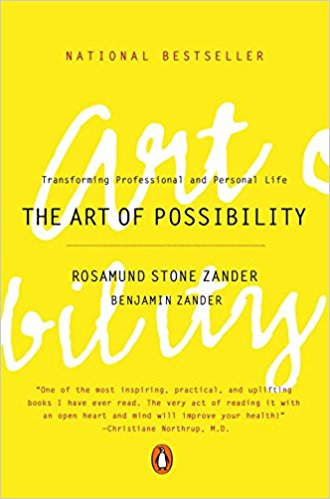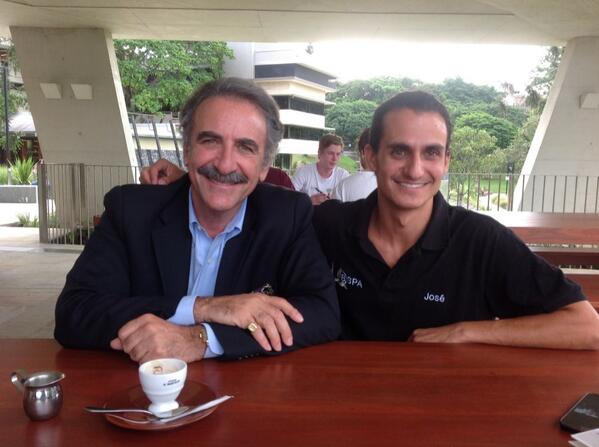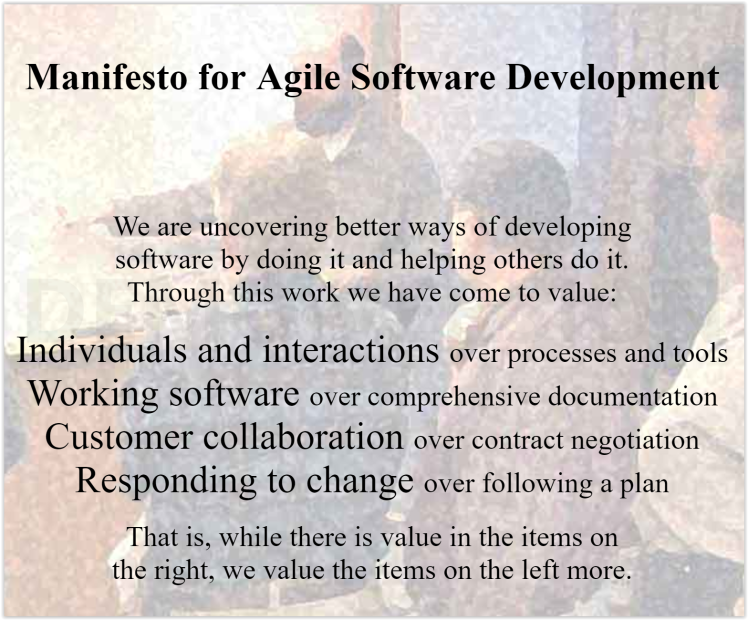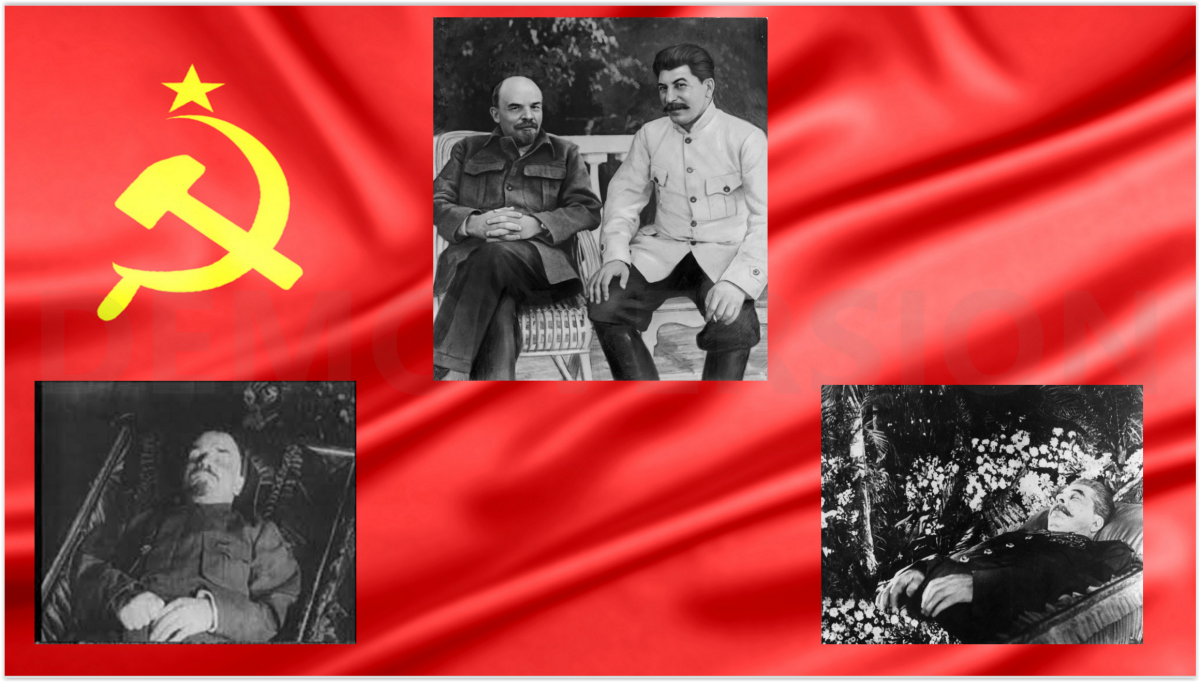Author: hadriansagilewall
#Agile quote of the day
“In the beginner’s mind there are many possibilities, in the experts mind there are few.” ~Zen teacher Shunryu Suzuki
#Agile book tip worth mentioning
#Agile video of the year (century?)
Ernesto Sirolli
was 27 when he experienced that all the NGO were no real entrepreneurs. Real entrepreneurs do not have in their biography the word I, they only use the word WE. I am 54 and always dreamed of a new way of working, but was afraid to lose my job, my house, my wife so I followed the mainstream opposed by our society.
I have not met any such entrepreneur in the 30 years I work as a consultant in IT that did not use the word I and always used the word WE. The same applies for politicians but also for more then 90% of the people I met in the IT industry. The same applies for all management in the companies I worked for in these 30 years. Or all people that work for NGO’s. They help people because they think our western model is better then the simple and basic model used by “non-developed” cultures. They all think from their ego and always used the word I, not WE. Shut up and listen! This is real entrepreneurship based on RESPECT! Leave people in their dignity and really help them to achieve their dream and do not impose your dream upon them.
Look the video and weep, like I did.
#Agile choice of the day
Which one do you prefer?
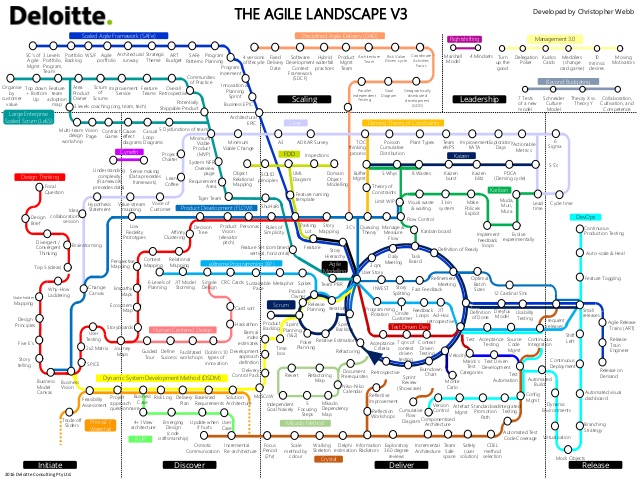
OR
#Teal or #Agile = no managers anymore?
You hear a lot of buzz around the tasks of middle management in an agile or teal organisation. Indeed a lot of management task can be shifted to the self-organising teams, so what is left for the managers to do?
Person = Resource

If, like me, you have been working in a hierarchic or top-down organisation for a long time, it can be difficult to switch gradually to a teal organisation. You are used to receive orders from above and receive targets and milestones and impose them onto your people. People above you have spent a lot of time and effort in workshops and meetings to come up with a valuable five-year strategy and have set out the lines of the company for a longer term: budget, scope and timing is fixed. You are ensured that the teams themselves do not have time to do this, since they are under pressure to reach the goals and targets set and report to you about the progress. They can not understand the whole picture, the organisation is simply to complex for this. Most of them are even not interested to do more than what they are supposed to do.
So your major task is to measure progress against the plan and report this to senior management and other stakeholders. You even have perhaps a good relation with your people, but you only let people decide and think within the safe borders of the targets set upfront. In the end you are held responsible to meet your targets so the only way to reach them is to ensure your teams do the same. So you cannot always play mister nice guy. You are professional, accurate, perfectionist and can be tough when needed. When you reach the targets and goals set, you are rewarded, if not you are the scapegoat and will make sure next year somebody else will be the scapegoat.
The same pattern applies to senior management who are responsible for maximizing profit for the shareholders. This command and control model sees each person as a resource to realise the goals set upfront.
Starting to change
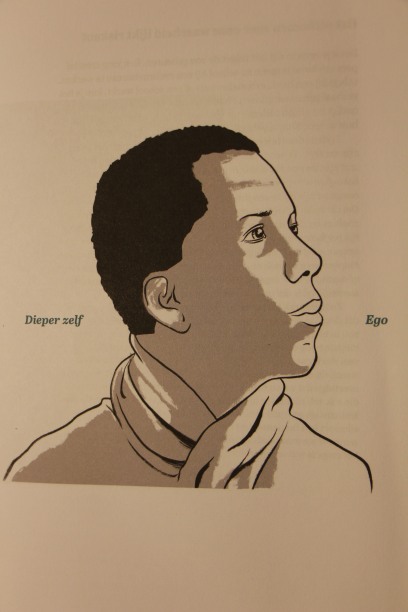
If the CEO, any other natural leader or the founder decides to shift the people to be more self-organising, more human and adaptive to change, this can only work if all the shareholders agree. If not they will take over control as soon as there is a negative trend in the market share or profit of the company.
Simply said, you will have people that will leave and other that will stay.
Those who want to leave
Some managers will be reluctant to leave their office and chair. So it is important to talk to these managers in a honest and open way.
As a manager you have to make up your mind whether you want to adapt to the new philosophy or leave the company. Although leaving a company is never easy, be honest with yourself and ask yourself whether you could adhere to this new approach. If not, it is better for you to search for another challenge. The reason why you adapted the command and control model is because you were afraid to react or to let go, so you might also feel afraid to leave.
It does not make any sense to impose the new approach to people, since that is exactly violating one of the major values of teal organisations. Otherwise you become paternalistic and we see nowadays in Minor Asia and Africa the results of that. As a company you should also be honest with yourself and follow your values. Give people time to leave, help them to find a job better suited for them and reward them for the good work they have been doing all those years.
Those who stay
As it is not motivating to follow orders from above for team members, managers might also have felt uncomfortable in their chair. Simply checking the plan against the actual work can be quite boring and kills any creativity. It is hard to think out-of-the-box when the box is closed and obscure from the start. Deep in you there was a voice saying you did not like that approach, but you were afraid to loose your job if you would oppose to much.
You can now fill up your time with hopefully more fruitful and self-complacent tasks: measuring if the product satisfies the customers, understand the customer current and future needs, adapt the product line if needed, reprioritise the product plan regularly, refine the needed budget, listen to people, motivate and coach people, make them think out-of-the-box, encourage their creativity, give them space to experiment, fail and learn, allow them to chase their dreams and be themselves.
As each team member has her strengths and weaknesses, the same applies for the managers currently in place. In stead off executing all management and HR tasks, they should focus on the things they are good in and self-confident, so reinforcing the strength of the teams and the organisation. Give them time to change and do not expect a big bang. If you take the power of hiring, dismissing, rewarding or punishing people away from the manager and bring it to the teams, managers wil really need to (as all team members) take up their responsibility and ensure they use their skills and talents to help the people and by doing so also allowing the organisation to grow in an organic way.
If you stay in the company for other reasons (afraid of losing their job, reluctant to search for a new job) you will gradually become aware yourself that you do not fit anymore. You might be confronted with the remarks of your colleagues and decide to leave. In the worse case your colleagues will ask you to leave, for your own, theirs and the company’s sake.
#Agile quote of the day
“Your job as a manager is to create a habitat that is optimized for adaptation, exploration, and innovation.” ~ Jürgen Appelo in Forbes
Image by – Own work
Founders and parents, get inspired and inspire others
When I hear founders of an organisation talk about sharing their organisation with their employees, they feel like they have to let go their child, their baby. When they founded their organisation, they were inspired by creative ideas that came out of their mind. By thinking that they own their thoughts and ideas, they fear that somebody will harm a part of themselves if they participate in the way the organisation could evolve. Like a lot of mothers that overprotect their child in stead off creating an environment and habitat where they will also be inspired.
When I feel inspiration coming up, I feel myself a channel used by another force. It is like the flow of a river that needs to find it’s way out. I sometimes wake up then (like this night), and I start writing a new song. Sometimes I only write a text, sometimes I do both: a song with text. And then I want to share this with other musicians who can add new sounds, new riffs, new instruments and rhythm to my song. I sometimes also feel when I am presenting the song and they have new ideas “Hey that is my song, do not alter it, it is good as it is”. But when I see that people are inspired by what inspired me and see the end result, I feel happy and let it go. Not always, I have to admit.
Perhaps founders and mothers (I know, fathers and grandparents are alike), should see their organisation and (grand)child in the same manner: letting go that it is their idea or (grand)child, something they own, which makes a part of themselves. It would be better to ensure that the right context is there to let other people be inspired by your ideas and allow the idea to grow bigger, differently and continuously. Or let your (grand)child be inspired by ideas of their own or ideas from other people. Not only your own ideas.
We do not own our ideas, they serve a higher purpose, I believe.
Unfortunately I have not yet written a new hit song, so I keep waking up at night thinking that I’ve found the basis for a new hit. But perhaps this small article will be something that touches people’s souls.
Time to go back to bed I think.
Geert
#Agile quote of the day
“In a natural ecosystem power is totally distributed, all over the place.” ~ Henri Lipmanowicz
The role of the #CEO in a #cyan or #teal #organisation
Fréderic Laloux describes in his book Reinventing Organisations the role of the CEO, the founder of the organisation or highest leader in a cyan organisation. They are in a way as well less important as more important than in traditional hierarchic organisations.
They cannot take decisions on their own anymore or block certain decisions. This means that they will have to give up some of their powers, which might feel very frightening for most of the current CEO’s. In most cases the CEO will remain the person that represents the organisation, the head of the organisations whom suppliers, big customers and supervisors want to talk with. But since there are less or even no targets, budgets, no direction team, no top-down strategies, what is the exact role of the CEO then?
Trust
Each time a problem arises in the organisation, people will propose well-tried solutions: impose a new rule or control, create a central supervising role and team, take the decision in the highest echelon of the organisation. The CEO is then there to ensure that trust prevails. If somebody commits fraud against a business, you can easily impose a supervisor to avoid this. But this might harm the trust within the whole company. So you have to balance the pro’s and con’s: do you want to harm the trust with all your employees for one mistake of one person?
Role model for self-management
The CEO’s influence is limited because of the advice process. If you want to take a decision you have to contact all people that will be influenced by the decision and subject matter experts. Not everybody has to agree but if their are no major objections, the decision can be taken and adapted when new ideas arise or circumstances ask for it. So they will have to fight against the urge to take the decision on their own. The advice process is also not a consensus. “Consensus may sound appealing, but it’s not always most effective to give everybody veto power. In the advice process, power and responsibility rest with the decision-maker. Ergo, there is no power to block.”
Role model for Wholeness
The CEO should invite people to be their selves by being her- or himself. If the CEO is still focused on his ego (extrinsic motivation like status, money) the organisation will also act in this way. If however (s)he seeks intrinsic motivation like honesty, openness and vulnerability (admitting that (s)he doe snot know everything and can make mistakes), people will feel more confident to act in the same way. Being vulnerable is seen as a weakness, but admitting that you are wrong for the sake of the organisation is a strength and needs courage.
Role model for Evolutionary purpose
CEO’s must be humble and remind people that their work serves a higher goal that transcends their individual. It is not about ruling out yourself at work. At the contrary: being yourself and find your purpose that suits the overal purpose of the organisation. And that purpose is not making more profit or becoming bigger to protect the company against the competitors.
Take up other roles
Beside these roles, the CEO can take up any role that suits her/him. In most cases they will still take up roles that deal with the broadest questions in the organisation: Do we need to launch new products? Do we need to move or build new offices? Do we need a new rewarding system? These questions have influence on large groups of colleagues, sometimes on all employees.
In traditional hierarchic organisations these decisions are taken at the top and the managers push these decision to all echelons of the organisation. In cyan organisations they have to conform to the advice process. So how do they do that? Jos de Blok from Buurtzorg made his blog on the intranet his instrument of leadership. If he has something in his mind, he places it on his blog. All employees are invited to react.
- If their comments point in the direction of agreement, the decision can be taken in hours.
- If the debate is continuing, the decision is amended and again communicated on the blog.
- If the proposal is not yet mature enough, a workgroup will adjust the proposal.
Imagine how long it would take in a hierarchic organisation: preparing powerpoints, long steering committees and board meetings, informing middle-management and top-down announcements to the employees.


